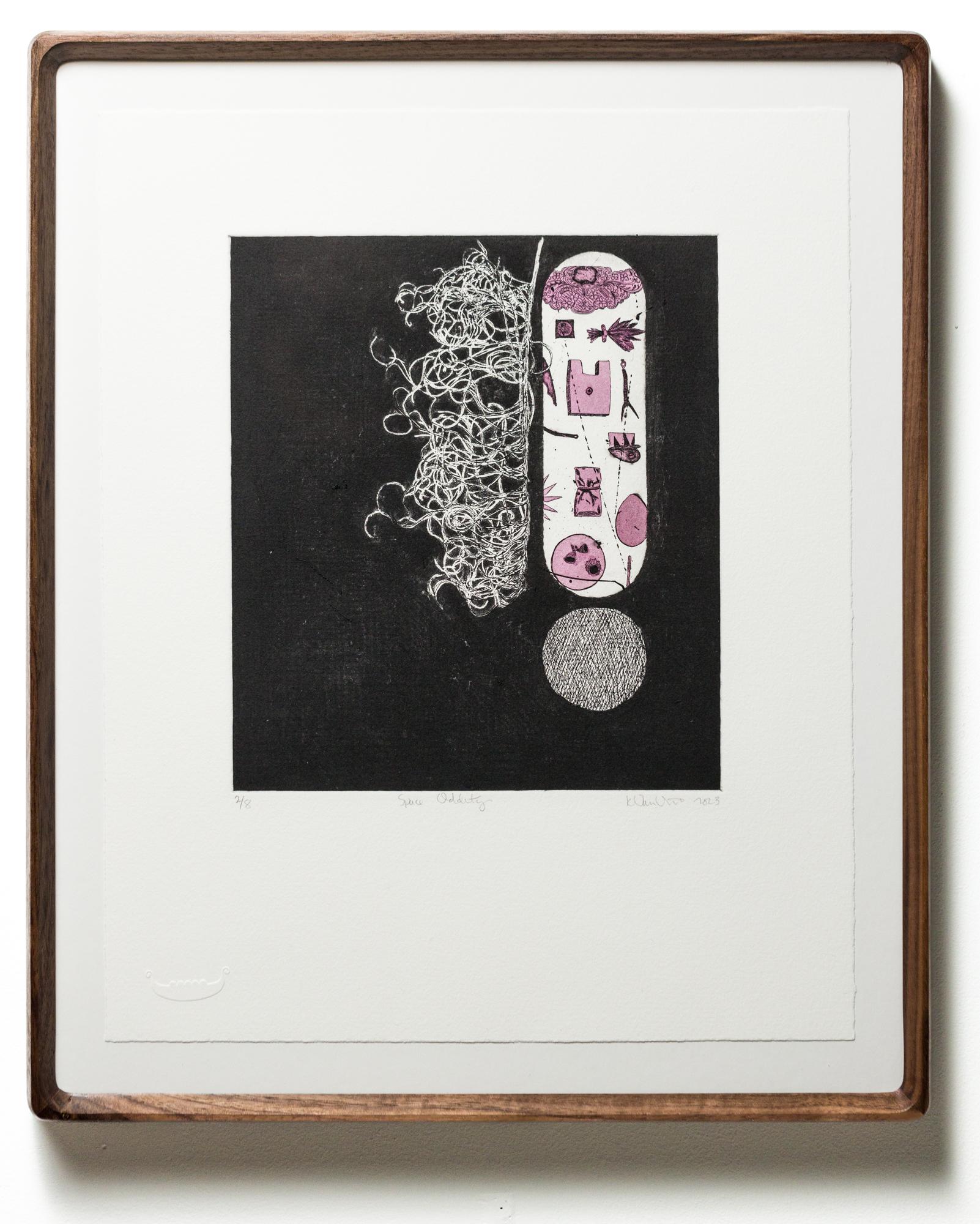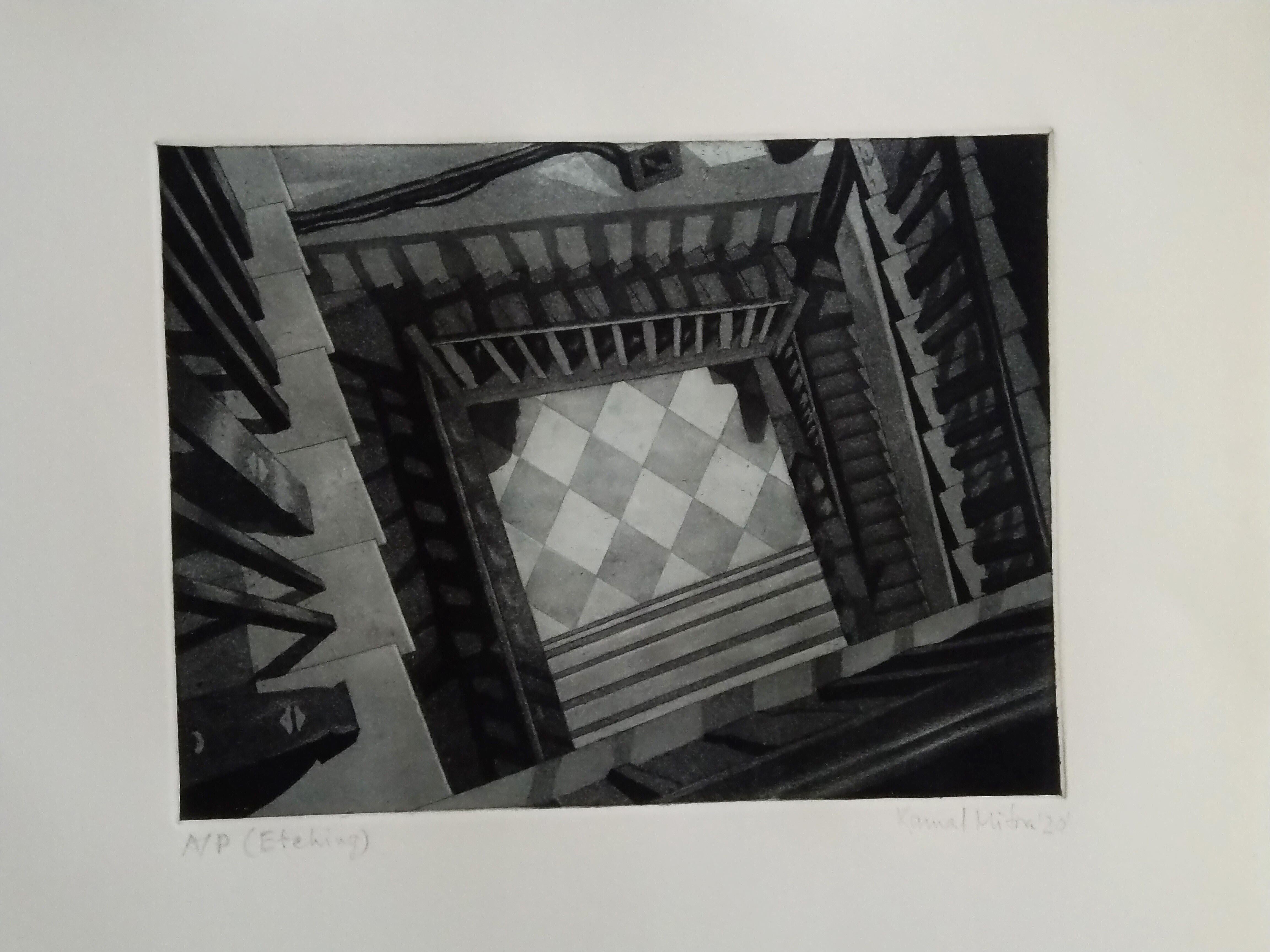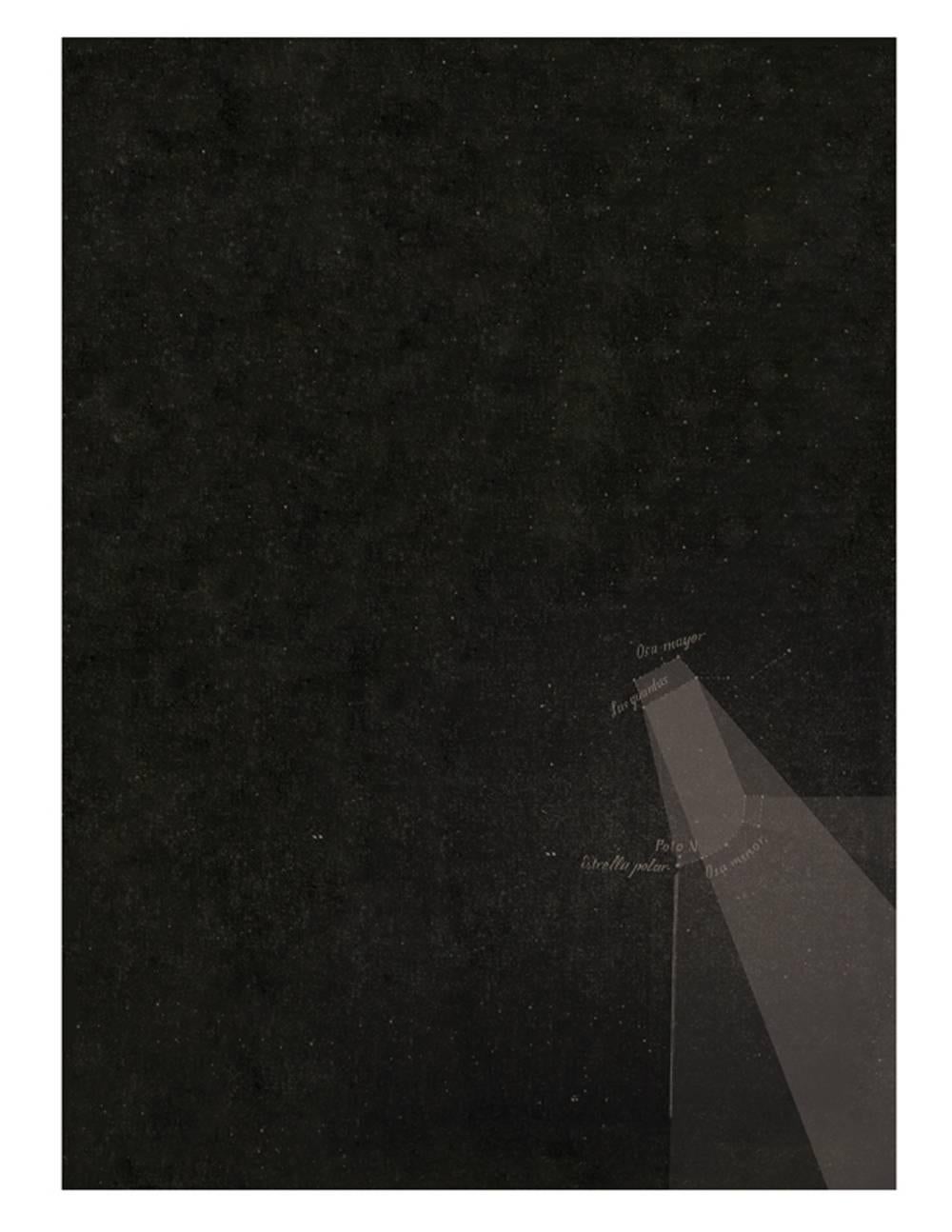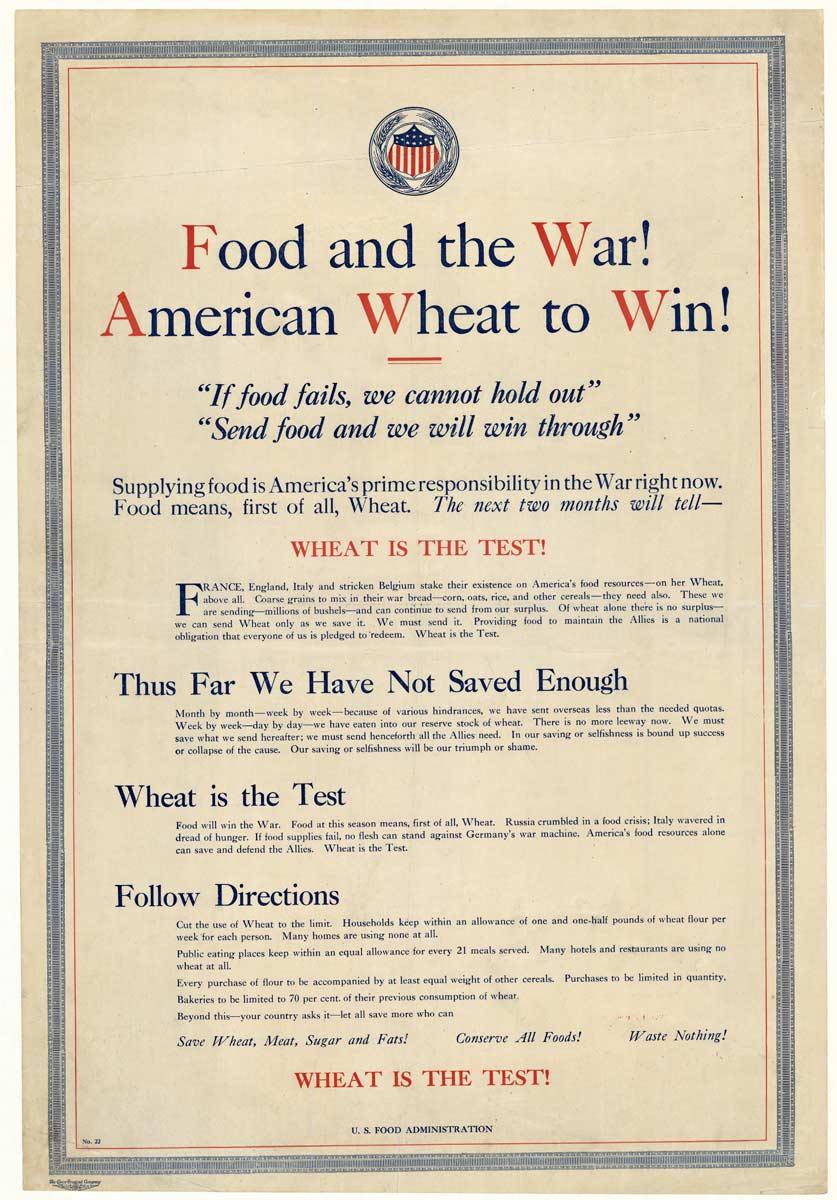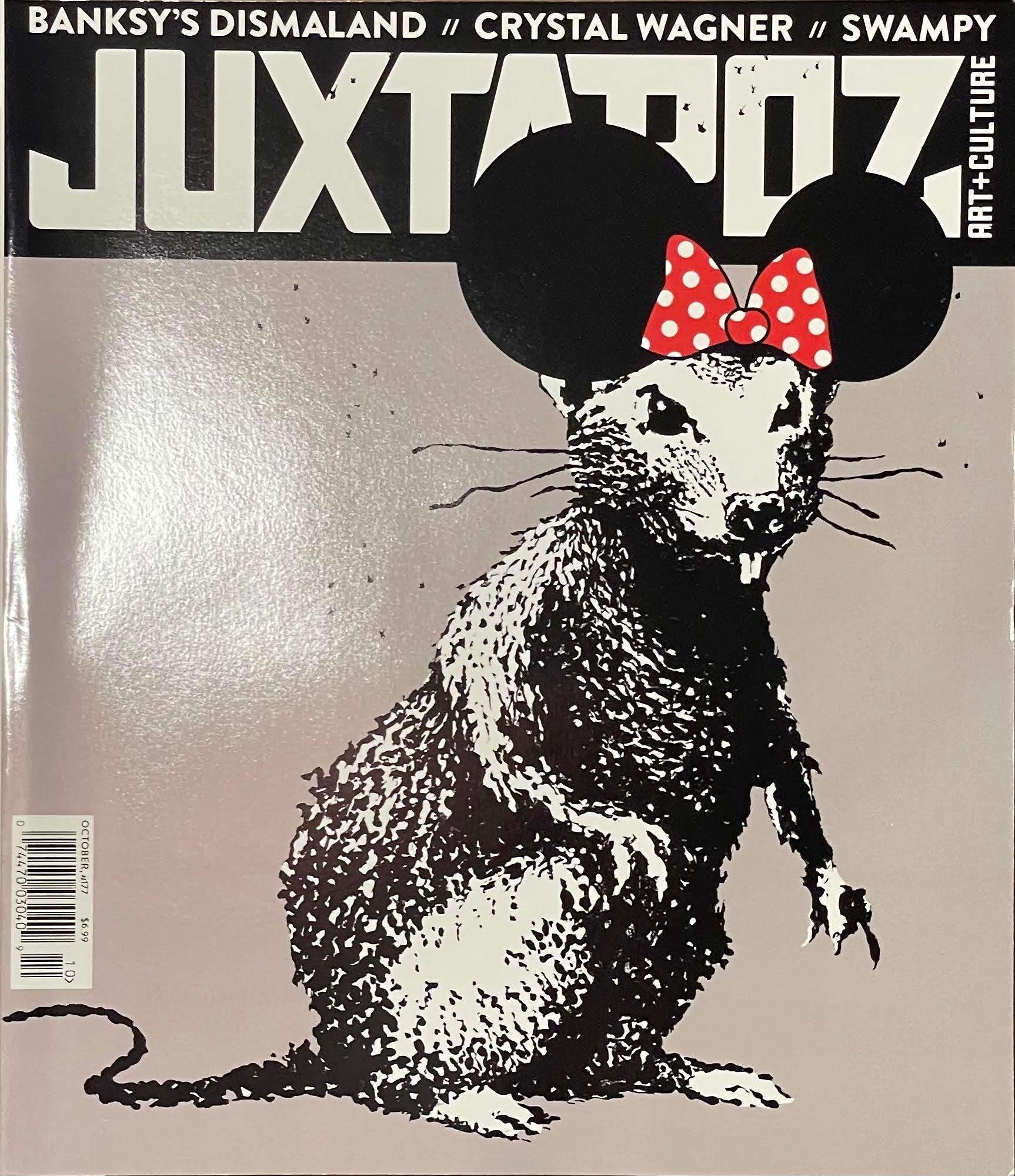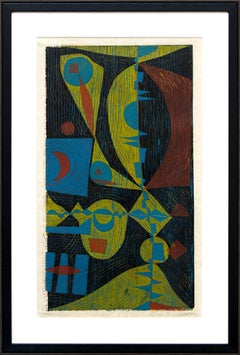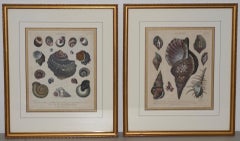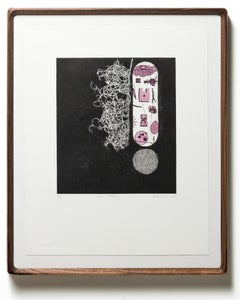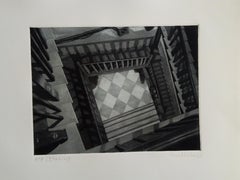
Grand Lake (Colorado)
View Similar Items
Want more images or videos?
Request additional images or videos from the seller
1 of 8
Arnold RönnebeckGrand Lake (Colorado)1932
1932
About the Item
- Creator:Arnold Rönnebeck (1885 - 1947)
- Creation Year:1932
- Dimensions:Height: 21 in (53.34 cm)Width: 15.75 in (40.01 cm)
- Medium:
- Movement & Style:
- Period:
- Condition:
- Gallery Location:Denver, CO
- Reference Number:Seller: 200171stDibs: LU273458632
About the Seller
5.0
Platinum Seller
These expertly vetted sellers are 1stDibs' most experienced sellers and are rated highest by our customers.
Established in 1979
1stDibs seller since 2013
265 sales on 1stDibs
Typical response time: 3 hours
More From This SellerView All
- Central City, Colorado 3/25, 1930s Black White Modernist Cityscape LithographBy Arnold RönnebeckLocated in Denver, COCentral City (Colorado) 3/25 is a lithograph by Arnold Ronnebeck from 1933 depicting a city scene with buildings. Presented in a custom black frame, outer dimensions measure 24 ½ x 19 ⅝ x ⅝ inches. Image size is 14 ¾ x 10 inches. Piece is clean and in very good vintage condition - please contact us for a complete condition report. Provenance: Private collection, Denver Expedited and internship shipping available - please contact us for a quote. About the Artist: Modernist sculptor, lithographer and museum administrator, Rönnebeck was a noted member of European and American avant-garde circles in the early twentieth century before settling in Denver, Colorado, in 1926. After studying architecture at the Royal Art School in Berlin for two years beginning in 1905, he moved to Paris in 1908 to study sculpture with Aristide Maillol and Émile-Antoine Bourdelle. While there he met and befriended American modernist painter, Marsden Hartley, of whom he sculpted a bronze head that was exhibited at the Salon d’Automne in Paris in 1912 and the following year at Hartley’s solo show of paintings at Alfred Stieglitz’s Gallery 291 in New York. A frequent guest of Gertrude Stein’s Saturday "evenings" in Paris, she described Rönnebeck as "charming and always invited to dinner," along with Pablo Picasso, Mabel Dodge (Luhan) and Charles Demuth. After the outbreak of World War I in 1914, Rönnebeck returned to Germany where he served as an officer in the German Imperial Army on the front lines. Twice wounded, including in the Battle of Marne in France, Kaiser Wilhelm II awarded him the Iron Cross. During the war Hartley fell in love with Rönnebeck’s cousin, Lieutenant Karl von Freyburg, who was killed in combat. As a tribute to Freyburg, Hartley created Portrait of a German Officer (1914) now in the Metropolitan Museum of Art in New York. After the war Rönnebeck traveled in Italy with German writer, Max Sidow, and German poet, Theodor Daubler, doing a series of drawings of Positano and the Amalfi Coast that formed the basis for his lithographs on the subject. The death of his finacée, the young American opera singer Alice Miriam in 1922 and his own family’s increasing financial problems in post-World War I Germany led him to immigrate to the United States in 1923. After living briefly with Miriam’s family in Washington, DC, he moved to New York where he became part of the avant-garde circle around Alfred Stieglitz. His essay, "Through the Eyes of a European Sculptor," appeared in the catalog for the Anderson Gallery exhibition, "Alfred Stieglitz Presents Seven Americans: 159 Paintings, Photographs & Things, Recent & Never Publicly Shown, by Arthur G. Dove, Marsden Hartley, John Marin, Charles Demuth, Paul Strand, Georgia O’Keeffe, Alfred Stieglitz." In New York Rönnebeck began producing Precisionist-style lithographs of the city’s urban landscapes which he termed "living cubism." Some of them were reproduced in Vanity Fair magazine. Through Stieglitz he met Erhard Weyhe head of the Weyhe Gallery who, with its director Carl Zigrosser, arranged Rönnebeck’s first solo American exhibition in May 1925 at the gallery in New York. Comprising some sixty works – prints, drawings and sculpture – the show subsequently traveled on a thirteen-month tour of major American cities. Until the end of his life, the gallery represented him, along with other American artists Adolf Dehn, Wanda Gag, Rockwell Kent, J.J. Lankes, Louis Lozowick, Reginald Marsh and John Sloan. In the summer of 1925, as the guest of Mabel Dodge Luhan, Rönnebeck first saw Taos, New Mexico, which Marsden Hartley had encouraged him to visit. It was there that he met his future wife, Louise Emerson, an easel painter and muralist. A year later they were married in New York before relocating to Denver. He served as director of the Denver Art Museum from 1926 to 1930 where he invited Marsden Hartley to lecture on Cézanne’s art in 1928. Rönnebeck fostered the development of the museum’s collection of American Indian art and the curation of modernist art exhibitions. In addition to his work at the museum, he was professor of sculpture at the University of Denver’s College of Fine and Applied Arts from 1929 to 1935, and wrote a weekly art column in the Rocky Mountain News. His best known Denver sculptures from the late 1920s in bronze, copper, stone, wood and terra cotta include a reredos, The Epiphany, at St. Martin’s Chapel; The History of Money (six panels) at the Denver National Bank; The Ascension at the Church of Ascension; and the William V. Hodges Family Memorial at Fairmount Cemetery. At the same time he did a series of terra cotta relief panels for La Fonda Hotel in Santa Fe, New Mexico. In the 1930s his bas-relief aluminum friezes of stylized Pueblo and Hopi Indian Kachina masks...Category
1930s American Modern Figurative Prints
MaterialsLithograph
- Shapes, Mid Century Modern Abstract Colored Woodcut, Geometric Fine Art PrintBy Edward MarecakLocated in Denver, COBlock print on linen by Edward Marecak (1919-1993) titled Shapes. Presented in a custom frame with all archival materials, outer dimensions measure 29 x 19 ¼ x 1 ⅛ inches. Image size...Category
20th Century Abstract Abstract Prints
MaterialsWoodcut
- Comanche Dance, Ildefonso Pueblo, New Mexico Southwest Framed EtchingBy Gene KlossLocated in Denver, COComanche Dance at San Ildefonso Pueblo (New Mexico). Etching and drypoint, artist's proof from an edition of 50 prints. Presented in a custom frame, outer dimensions measure 22 ¼ x 18 ½ x ½ inches. Image size is 11 ¾ x 14 ½ inches. Print is clean and in very good vintage condition - please contact us for a detailed condition report. Expedited and international shipping is available - please contact us for a quote. About the Artist: Gene (Alice Geneva) Kloss is considered one of America’s master printmakers. She was born in Oakland, California and established herself as an artist on the West coast. Kloss was introduced to etching by Perham Nahl while at UC Berkley. She graduated in 1924, and in 1925 married poet Phillips Kloss. In her late twenties, Kloss moved to Taos, New Mexico and began her life’s work of the New Mexican landscape and peoples. It was at this time that she received national acclaim. Her artwork exudes an unmistakable content and style. Enchanted by the architecture, mountainous landscapes and rituals of the inhabitants, Kloss captured the beauty of the Southwest and surrounding areas. Her style was bold yet deftly simple, masterfully expressing the elusive Southwestern light...Category
1980s American Modern Figurative Prints
MaterialsDrypoint, Etching
$1,525 Sale Price53% Off - Corralled Horse (Artists Proof), 1940s Framed American Modernist Horse EtchingBy Ethel MagafanLocated in Denver, CO"Corralled Horse", is an etching on paper by western artist Ethel Magafan (1916-1993) of a single dark horse standing outside in a wooden fenced corral. Presented in a custom frame, outer dimensions measure 19 x 23 inches. Image size is 10 x 14 inches. This is marked as an Artist Proof Piece is in very good condition - please contact us for a detailed condition report. Provenance: Estate of Artist, Ethel Magafan Expedited and international shipping is available - please contact us for a quote. About the Artist: Ethel Magafan Born 1916 Died 1993 The daughter of a Greek immigrant father and a Polish immigrant mother who met and married in Chicago, Ethel Magafan, her identical twin sister Jenne and their elder sister Sophie grew up in Colorado to which their father relocated the family in 1919. They initially lived in Colorado Springs where he worked as a waiter at the Antlers Hotel before moving to Denver in 1930 to be head waiter at the Albany Hotel. Two years later during the Great Depression Ethel and Jenne experienced at sixteen the tragic loss of their father who had encouraged their artistic aspirations. He was proud when Ethel, a student at Morey Junior High School, won top prizes in student poster contests sponsored by the Denver Chamber of Commerce and the Denver Post. At East High School in Denver she and Jenne contributed their art talents to the school’s and by their senior year were co-art editors of the Angelus, the 1933 yearbook. At East they studied art with Helen Perry, herself a student of André Lhote in Paris and the Art Institute of Chicago. Her decision to abandon an arts career to teach high school students served as an important example to Ethel and Jenne, who early on had decided to become artists. In a city-wide Denver competition for high school art students Ethel won an eighteenweek art course in 1932-33 to study at the Kirkland School of Art which artist Vance Kirkland had recently established in the Mile High City. Perry encouraged the Magafan twins’ talent, exposing them to the work of Matisse, Picasso and Cézanne and introducing them to local artists and architects like Frank Mechau and Jacques Benedict whom she invited to speak in her high school art classes. She paid the modest tuition for Ethel and Jenne to study composition, color, mural designing and painting at Mechau’s School of Art in downtown Denver in 1933-34. In the summer of 1934 and for a time in 1936 they apprenticed with him at his studio in Redstone, Colorado. When they returned to Denver in 1934 with no family breadwinner to support them, their mother insisted that they have real jobs so they worked as fashion artists in a Denver department store. When Jenne won the Carter Memorial Art Scholarship ($90.00) two years later, she shared it with Ethel so that both of them could enroll in the Broadmoor Art Academy (now the Colorado Springs Fine Arts Center) where they studied with Mechau. When the scholarship money ran out after two months, he hired them as his assistants. Along with Edward (Eduardo) Chavez and Polly Duncan, they helped him with his federal government mural commissions. At the Fine Arts Center Ethel also studied with Boardman Robinson and Peppino Mangravite, who hired her and Jenne in 1939 to assist him in his New York studio with two murals commissioned for the post office in Atlantic City, New Jersey. Like their Denver high school art teacher, Robinson also stressed the need to draw from nature in order to "feel" the mountains, which later become the dominant subject matter of Ethel’s mature work after World War II. Mechau trained her and her sister in the complex process of mural painting while they studied at the Colorado Springs Fine Arts Center, teaching them the compositional techniques of the European Renaissance masters. This also involved library research for historical accuracy, small scale drawing, and Page 2 of 4 the hand-making of paints and other supplies. Ethel recalled that their teacher "was a lovely man but he was a hard worker. He drove us. There was no fooling around." Her apprenticeship with Mechau prepared her to win four national government competitions, beginning at age twenty-two, for large murals in U.S. post offices: Threshing – Auburn, Nebraska (1938), Cotton Pickers – Wynne, Arkansas (1940), Prairie Fire – Madill, Oklahoma (1940), and The Horse Corral – South Denver, Colorado (1942). In preparation for their commissions Ethel and her sister made trips around the country to pending mural locations, driving their beat-up station wagon, dressed in jeans and cowboy boots with art supplies and dogs in tow. She and Jenne combined their talents in the mural, Mountains in Snow, for the Department of Health and Human Services Building in Washington, DC (1942). A year later Ethel executed her own mural, Andrew Jackson at the Battle of New Orleans, January 8, 1814, for the Recorder of Deeds Building, also in Washington, DC. Her first mural commission, Indian Dance, done in 1937 under the Treasury Department Art Project for the Senate Chamber in the United States Capitol, has since disappeared. Ethel and her sister lived and worked in Colorado Springs until 1941 when their residence became determined by the wartime military postings of Jenne’s husband, Edward Chavez. They moved briefly to Los Angeles (1941-42) and then to Cheyenne, Wyoming, while he was stationed at Fort Warren, and then back to Los Angeles for two years in 1943. While in California, Ethel and Jenne executed a floral mural for the Sun Room of the Beverly Hills Hotel and also painted scenes of the ocean which they exhibited at the Raymond and Raymond Galleries in Beverly Hills. While in Los Angeles they met novelist Irving Stone, author of Lust for Life, who told them about Woodstock, as did artists Arnold Blanch and Doris Lee (both of whom previously taught at the Colorado Springs Fine Arts Center school. In summer of 1945 Ethel, her sister and brother-in-law drove their station wagon across the country to Woodstock which became their permanent home. A year later Ethel married artist and musician, Bruce Currie, whom she met in Woodstock. In 1948 with the help of the GI Bill they purchased an old barn there that also housed their individual studios located at opposite ends of the house. The spatial arrangement mirrors the advice she gave her daughter, Jenne, also an artist: "Make sure you end up with a man who respects your work…The worst thing for an artist is to be in competition with her husband." In 1951 Ethel won a Fulbright Scholarship to Greece where she and her husband spent 1951-52. In addition to extensively traveling, sketching and painting the local landscape, she reconnected with her late father’s family in the area of Messinia on the Peloponnese peninsula in southern Greece. At the same time, her sister Jenne accompanied Chavez on his Fulbright Scholarship to Italy where they spent a productive year painting and visiting museums. Shortly after returning home, Jenne’s career was cut tragically short when she died of a cerebral hemorrhage at age thirty-six. It deeply affected Ethel whose own work took on a somber quality for several years conveyed by a darkish palette, as seen in her tempera painting, Aftermath (circa 1952). In the 1940s Ethel and her sister successfully made the important transition from government patronage to careers as independent artists. Ethel became distinguished for her modernist landscapes. Even though Ethel became a permanent Woodstock resident after World War II, from her childhood in Colorado she retained her love of the Rocky Mountains, her "earliest source of my lifelong passion for mountain landscape." She and her husband began returning to Colorado for annual summer camping trips on which they later were joined by their daughter, Jenne. Ethel did many sketches and drawings of places she found which had special meaning for her. They enabled her to recall their vital qualities which she later painted in her Woodstock studio, conveying her feeling about places remembered. She also produced a number of watercolors and prints of the Colorado landscape that constituted a departure from the American Scene style of her earlier paintings. Her postwar creative output collectively belongs to the category of landscape abstractionists as described by author Sheldon Cheney, although to a greater or lesser degree her work references Colorado’s mountainous terrain. She introduced a palette of stronger pastels in her paintings such as two temperas, Evening Mountains from the 1950s and Springtime in the Mountains from the early 1960s. In 1968 she was elected an Academician by the National Academy of Design in New York. Two years later, based on results of her many summer trips to Colorado, the U.S. Department of the Interior invited her to make on-the-spot sketches of the western United States, helping to document the water resources development and conservation efforts by the Department of the Interior. Her sketches were exhibited at the National Gallery in Washington, DC, and then sent on a national tour by the Smithsonian Institution. Similarly, her previous work as a muralist earned her a final commission at age sixty-three for a 12 by 20 foot Civil War image, Grant in the Wilderness, installed in 1979 in the Chancellorsville Visitors Center at the Fredericksburg National Military Park in Virginia. In the 1970s, too, she taught as Artist-in-Residence at Syracuse University and at the University of Georgia in Athens. Her many awards include, among others, the Stacey Scholarship (1947); Tiffany Fellowship (1949); Fulbright Grant (1951-52, in Greece with her husband); Tiffany Fellowship (1949); Benjamin Altman Landscape Prize, National Academy of Design (1955); Medal of Honor, Audubon, Artists (1962); Henry Ward Granger Fund Purchase Award, National Academy of Design (1964); Childe Hassam Fund Purchase Award, American Academy of Arts and Letters (1970); Silver Medal, Audubon Artists (1983); Champion International Corporation Award, Silvermine Guild, New Canaan, Connecticut (1984); John Taylor Award, Woodstock Artists Association, Woodstock, New York (1985); Harrison Cady...Category
1940s American Modern Figurative Prints
MaterialsEtching, Paper
- Nude with Winter Bouquet, Vintage Modernist Black & White Etching, Female FigureBy Doel ReedLocated in Denver, CO'Nude with Winter Bouquet 11/30', vintage aquatint etching on paper by Doel Reed (1894-1985) with a reclining female figure posed with a flowers in a vase and drapery from 1972. Signed by the artist lower right margin, numbered 11 of an edition of 30 lower left margin. Presented in a custom frame with archival materials, outer dimensions measure 20 ½ x 26 ¼ x 1 inches. Image size is 11 ¾ x 17 ¾ inches. Illustrated in Doel Reed: The Graphic Works by Harry B. Cohen and Ann L. Rogers, page 83, plate 124. Collections: University of Wyoming; Museum of Fine Arts, Santa Fe; University of Oklahoma; Oklahoma State University Exhibited: 147th National Academy of Design, New York; Indiana Printmakers, 1972; 32nd Annual Print Show, Philbrook Museum, 1972; 53rd Annual Exhibition, Society of American Graphic Artists, New York, 1975 About the Artist: Early in his artistic career, Dole Reed knew he wanted to be a printmaker. Influenced by Goya’s aquatints...Category
1970s American Modern Portrait Prints
MaterialsAquatint, Etching
- Arabesque, Female Ballet Dancer in Motion, Bronze & Gray Bas Relief SculptureBy Eric BransbyLocated in Denver, COA figurative bas relief sculpture of a female ballet dancer moving through arabesque pose by Colorado/Missouri artist, Eric Bransby (1916-1920). Bronze, Polymer forton casting. Provenance: Collection of the artist Eric James Bransby is a muralist, painter, illustrator, and teacher. Bransby studied at the Colorado Springs Fine Art Center in Colorado under Thomas Hart Benton, Jean Charlot, Boardman Robinson, and Josef Albers. He also studied at the Yale School of Fine Art. Bransby painted the Rockhurst Library Triptych Mural at the University of Missouri at Kansas City, where he was an associate professor of art. Bransby has also painted murals at Brigham Young University, the Air Force Academy...Category
20th Century American Modern Figurative Sculptures
MaterialsBronze
You May Also Like
- Pair of Early 19th Century "Conchology" Conch Shells Color Etchings c.1802Located in San Francisco, CAPair of Early 19th Century "Conchology" Color Etchings c.1802 Fantastic pair of hand colored etchings titled "Conchology". Published in London on December 24th, 1802. Each plate s...Category
Early 19th Century Realist More Prints
MaterialsEngraving, Aquatint
- "Space Oddity", Hand-Colored Etching, Decorative MotifsBy Katie VanVlietLocated in Philadelphia, PAThis piece titled "Space Oddity" is a limited edition piece by Kate VanVliet and is made from hand-colored intaglio with drypoint, aquatint, and soft ground on Rives BFK. This piece ...Category
21st Century and Contemporary Contemporary More Prints
MaterialsDrypoint, Etching, Aquatint
- Decorative House, Etching on paper by Indian Contemporary Artist "In Stock"By Kamal MitraLocated in Kolkata, West BengalKamal Mitra - Untitled - 10 x 13 inches (unframed size) Etching on Paper Inclusive of shipment in a roll form. About Kamal Mitra’s Works : While pursuing his Bachelors (Painting) ...Category
2010s Contemporary More Prints
MaterialsPaper, Etching
- Caribbean Window I (Limited Edition Print)By Mauro OliveiraLocated in LOS ANGELES, CALimited edition of 30 museum quality Giclee prints on CANVAS, signed and numbered by the artist. Print lead time 1 week. A "Certificate of Authenticity" issued by the artist is inc...Category
21st Century and Contemporary Modern More Art
MaterialsGiclée
- The Chagall Mezuzah - "Asher" tribeBy (after) Marc ChagallLocated in Jerusalem, ILThe Chagall mezuzah collection is a limited edition art project celebrating the art of one of the most iconic Jewish artist in history. This edition, consists of 1,800 sets of 12 Mezuzah casings, one for each of the tribes of Israel. Designed by Israeli artist Menahem Berman and certified by ARTE art gallery in Jerusalem, this exquisite housing is set in a 24k gold plated case. Enclosed within, on fine 300gr art paper, is a full color silkscreen print of the Chagall window...Category
1980s More Art
MaterialsGold
- Ficción Astronómica 2By Jaime ColínLocated in Cuernavaca, MorelosDigital print on cotton paperCategory
2010s Contemporary More Prints
MaterialsCotton, Paper, Digital
Recently Viewed
View AllMore Ways To Browse
Spa Francorchamps
Tavik F Simon
Van Luit
Vintage Army Flashlight
Chocolate Fortin
Fabien Fabiano
Poster Sardegna Vintage
Shinduk Kang
Vintage Ski Poster Oregon
Vintage Tiki Necklace
Vintage Raleigh Bikes
Megeve Ski Poster
Pietro Carabellese On Sale
Shio Kusaka
Idaho Ski Poster
Retro Barber Poster
Feather Headpiece
Seymour Chwast On Sale

